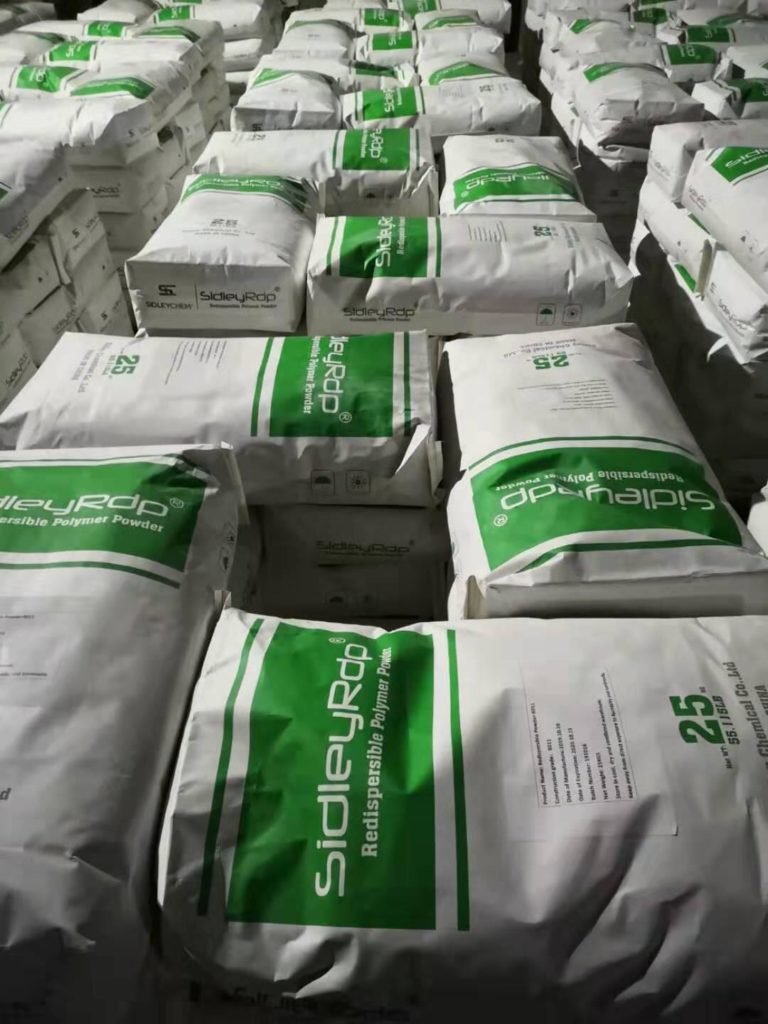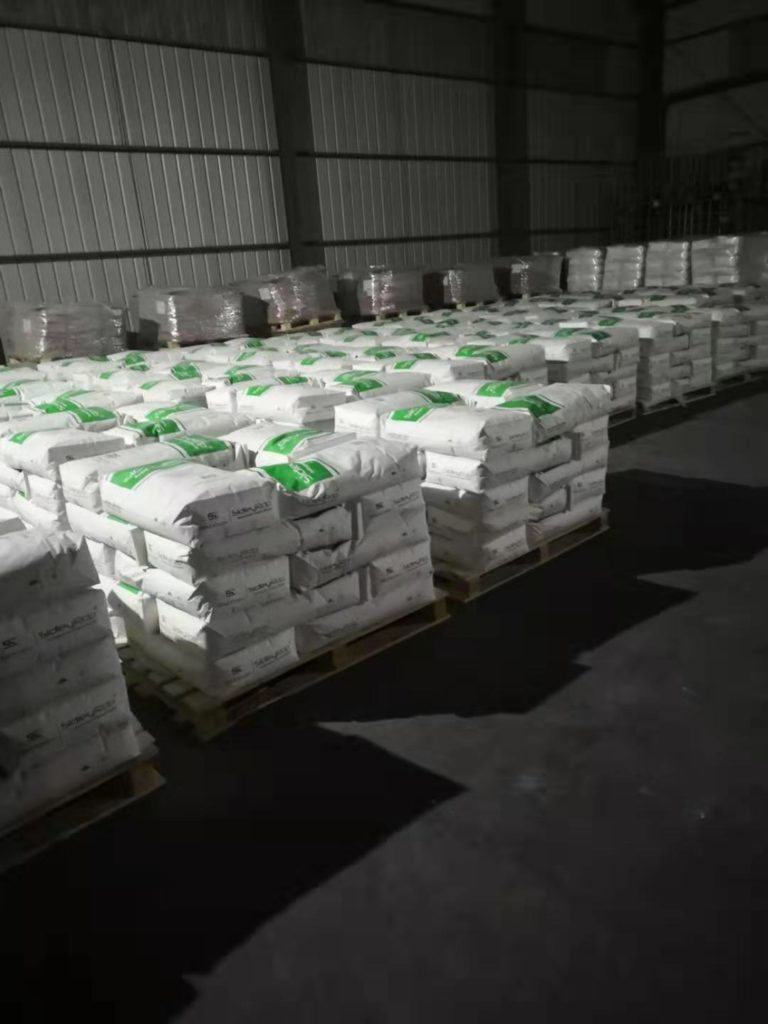Redispersible Polymer Powder (RDP)
Redispersible Polymer Powder as one of the most important additives in dry-mixed mortar has been widely used in the construction field. Its invention and appearance greatly promoted the popularization and application of dry-mixed mortar.

At present the most widely used RD powders are vinyl acetate vinyle-ethylen (VCAE) and vinyl acetate-tert-vinyle carbonate (VEOVA). To improve the bond tensile strength of cement based mortar and various base materials is the most important feature of vinyl copolymers, especially its ability to withstand large changes in ambient temperature. In addition, it is conductive to the development of long-term tensile bond strength of cement based mortar. After two and a half years storage in air, the bond tensile strength of modified cement based mortar is still increasing while the tensile bond strength of ordinary cement based
mortar is significantly lower than that of conservation for 28 days. Foreign research shows that after 10 years of application of three kinds of RDP dry-mixed modified cement mortars such as polyvinyl acetate,styrene/acrylic acid copolymer and ethylene/ vinyl chloride/lauric acid ethylene copolymer, cement based mortar has stable bonding strength, flexural strength and compressive strength. In the 5 year-old decorative mortar the terpolymer still shows good performance in the aqueous environment and has good hydrophobic effect. Scanning electron microscope showed that the morphology of polymer in cement based mortar remained unchanged 10 years later. In dry indoor and outdoor conditions, the appearance of polymer cement based mortar does not change. The twice toughening of polymer in mortar plays an important role especially in the holes and defects of base materials. The RDP was not dispersed twice nor washed away from the cement based mortar.
Cement and polymer have synergistic effect. As inorganic cementitious material cement plays a major role in compressive strength; as organic cementitious material, redispersible polymer powder plays a role in toughening, improving the internal bond strength and interface bond strength of cement based mortar, as shown in the picture:

- Sand and cement mortar (without polymer)
- Sand and lime mortar with polymer film formed by RDP
- Sand/cement mortar with RDP.
Under the same dosage, the effect of polyethylene vinyl acetate copolymer on the performance of cement mortar is better than that of acrylate emulsion, acrylate emulsion powder and ethylene vinyl acetate copolymer emulsion.
If polyvinyl acetate is often used to improve the fracture toughness, impermeability and bond strength of cement mortar with different matrix materials, styrene / acrylic copolymer is more important to improve the flexibility of cement mortar. The water cement ratio and the amount of cement have a certain influence on the properties of styrene / acrylic acid copolymer (SAE) cement mortar. With the increase of water cement ratio and cement content, shrinkage and water absorption gradually increase. The flexural strength of polymer cement mortar is higher than that of ordinary cement mortar. Under the condition of air curing, with the increase of water cement ratio, the flexural strength of 28d and 90d modified cement mortars only slightly decreased, but the flexural strength of mortars decreased greatly under the condition of water curing, and the influence of cement dosage was relatively small. The bond tensile strength of polymer mortar is obviously improved, especially under dry curing condition, the bond strength of modified cement mortar increases significantly with the increase of cement content, and the effect of water cement ratio is less than that of cement content. Cement can maintain the stability of mechanical properties such as compressive strength, while redispersible polymer powder can improve the internal tensile strength and interfacial bond tensile strength of mortar.
Here mainly introduces the production method of polyvinyl acetate. The raw material of redispersible polymer powder is mainly derived from vinyl acetate ethylene copolymer emulsion. Through the process of high temperature, high pressure and spray drying, the emulsion vinyl acetate copolymer is prepared into dry powder vinyl acetate ethylene copolymer. In order to make the dried RDP has good dispersibility, it is necessary to add anti-caking agent and carry out surface wrapping treatment in the production process of RDP to improve the storage and redispersibility. This kind of powdery colloid obtained from high temperature, high pressure, spray drying and surface treatment of copolymer emulsion is called Redispersible Polymer Powder, a synthetic resin dry powder that can be dispersed in water again. In other words if the powder is added to water and stirred evenly, a stable vinyl acetate ethylene dispersion will be formed. Its properties are exactly the same as those of the original copolymer emulsion.
The technical difficulty of producing RDP is to transform high viscosity copolymer liquid into redispersible and dispersible powder at room temperature through high temperature, high pressure, spray drying and surface treatment produces and the RDP produced has the same particle size distribution as the original emulsion. However, not all copolymer emulsions can be converted into redispersible polymer powder.

RDP as a new generation of powder adhesive has been widely used in plastering mortar, interface agent, internal and external wall putty, ceramic tile adhesive, joint-filler, repairing mortar, self leveling mortar, dry powder coating, color concrete art floor, factory hard floor, moisturizing system and other building materials.
